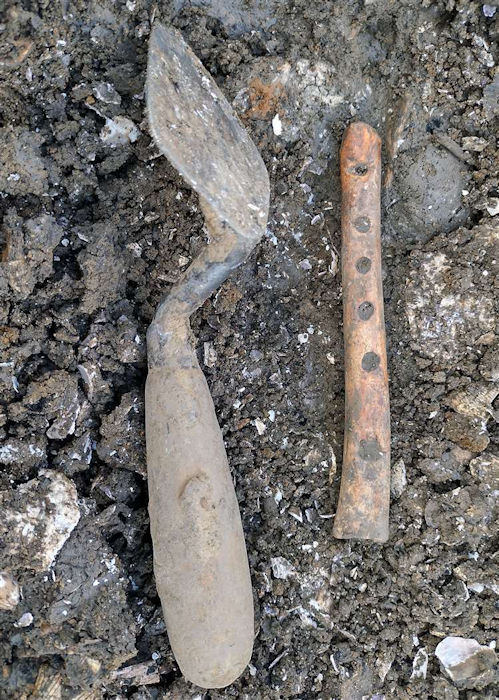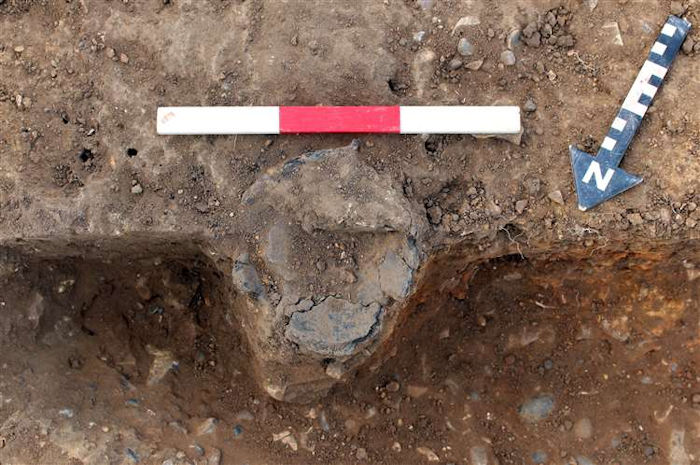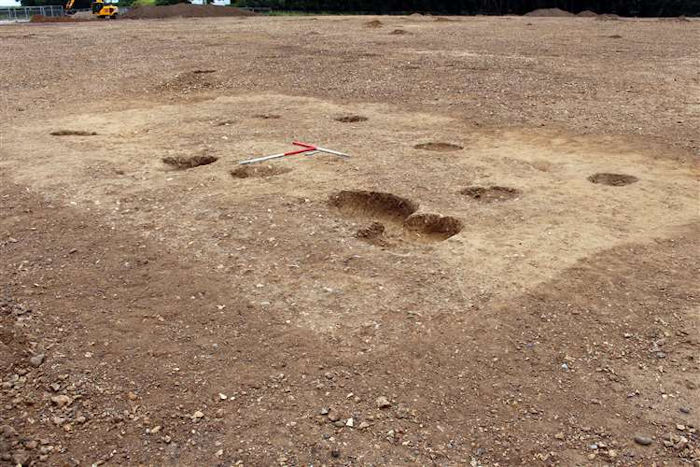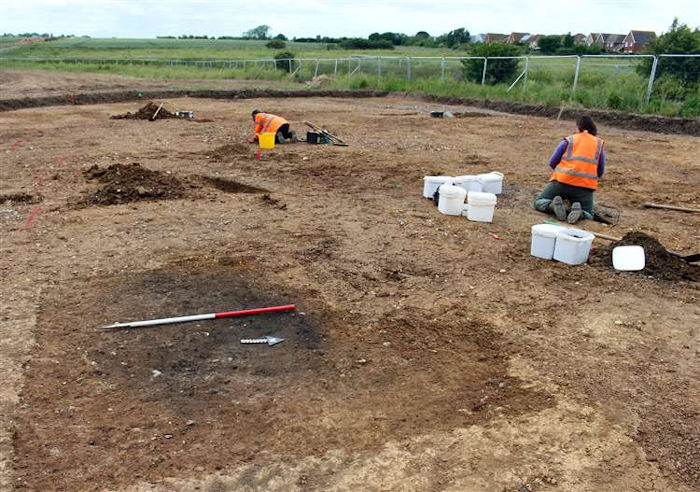Conny Waters – AncientPages.com – Archaeologists excavating in Kent, UK have made some interesting finds, and the oldest of them date back to the Bronze Age.
The discovery was made at Hillborough on the outskirts of Herne Bay, where according to lead archaeologist Richard Greatorex the presence of a medieval whistle suggests people in 1000 A.D. may have lived on the plot, which was most recently used for farming.

A medieval bone whistle excavated from the site in Herne Bay. Credit: Cotswold Archaeology
“It was made out of animal bone, the type of bone we don’t know yet. That shows that on the site it was found, we probably had a mixture of agricultural and domestic activities taking place there.
“These discoveries are locally and regionally important because the discoveries tell us more about the settlements on the north Kent coast.
Some of these objects – which include hundreds of pottery shards – were found a meter deep, others are only 30cm or 40cm down,” Greatorex told Kent Online.
Scientists also found Iron Age grain stores which are believed to have been raised from the ground to stop their contents from being pilfered by rats and mice.

A prehistoric pottery dish found on the site in Hillborough, Herne Bay. Credit: Cotswold Archaeology
The archaeologists think they may have unearthed farming enclosures spanning all three periods, with some containing pits, livestock shelters, and corn dryers.
“There’s some domestic activity alongside this agricultural activity in the medieval ones, so it could well be that people lived or worked there.
Because there’s Bronze Age activity, Iron Age activity and medieval activity, we can see the landscape has been used for a long period of time.
You get these in north Kent and Thanet, and very often they may be brewing stuff, drying cereal crops and making bread. This whole Taylor Wimpey development is slated to be done over the next few years, so I’m sure we’ll find out a lot more,” Greatorex added.

Post holes representing a late Bronze Age or early Iron Age agricultural building that could either be a grain store or livestock shelter. Credit: Cotswold Archaeology
According to Kent Online, the discovery was made on the site where Taylor Wimpey’s 900-home development is soon going to start.
The development is one of three planned for Hillborough, a sweeping plot of land south of Beltinge village.
AE Estates is still waiting for Canterbury City Council to decide whether to green light its 350-home scheme to the west of the site.

Cotswold Archaeology’s field team, excavating at the Hillborough site. Credit: Cotswold Archaeology
And Taylor Wimpey, which had its project approved by Housing Secretary Michael Gove in November, does not expect the archaeological finds to slow down their progress.
A spokesman for the company said: “In line with the requirements of the planning permission, an archaeological investigation is being carried out before construction work begins.
See also: More Archaeology News
“We would like to ᴀssure the community that all findings are being carefully recorded.
“At present, and as agreed with Kent County Council, we anticipate that we will start initial groundworks on site this month.”
Written by Conny Waters – AncientPages.com Staff Writer





